The 2008 Dodge Challenger’s looks were so faithful to the original that many people thought the first spy shots only showed a modified 1970 model. The Challenger created a huge amount of enthusiasm, and the “retro” styling continued, with little change, for 15 years.
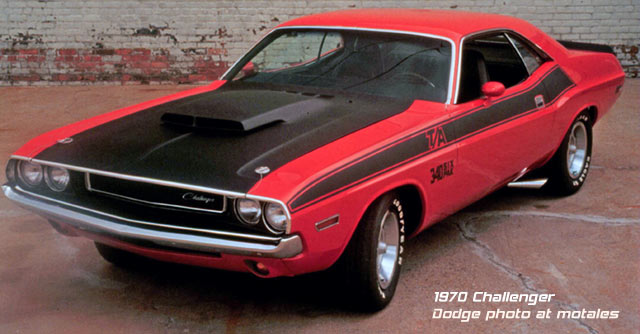
The 2008 Dodge Challenger was built on Chrysler’s large-car platform, but its wheelbase was four inches shorter than its Charger and 300 mates. All three had an independent short-long arm front suspension, with coil-over gas-charged shocks; the five-link independent rear suspension with coil springs was related to that of the Mercedes-Benz E-Class, without sharing any parts.

The first model year was restricted to the Challenger SRT8, powered by the SRT 6.1 liter Hemi V8. The 2008 Challenger SRT8 included 20” alloy wheels, a sport-tuned suspension, bi-xenon headlamps, heated leather seats, air conditioning, and a premium audio system; its ride height was a half-inch lower than that of the later “standard” Challengers, to help improve handling. Brakes had Brembo four-piston calipers all the way round. A five-speed automatic transmission was standard, and a six-speed Tremec TR6060 manual transmission was optional.
The new Challenger’s resemblance to the original 1970 models was remarkable since their dimensions were very different—the original had a longer hood and a lower roof. The new Challenger was seven inches longer, six inches taller, and had six more inches of wheelbase than the 1970 cars. The front styling looked as though it would bring very poor aerodynamics, but the coefficient of drag was just 0.353. The SRT8’s 56/44 weight distribution was far better than equivalent 1970s Challengers.
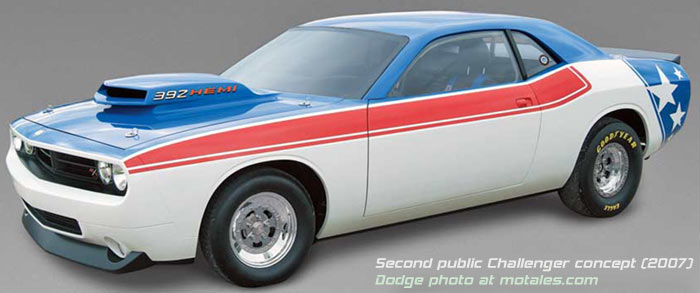
While the Challenger’s 6.1L Hemi V8 (425 horsepower and 420 lb-ft of torque) had debuted in the Magnum, 300C, and Charger, the Challenger had unique suspension tuning. Prior SRT models had almost painfully stiff suspensions, which the engineers had thought would provide the best traction. They later realized some more “give” improved real-world cornering, first applying this knowledge to the Challenger, then updating the other SRT cars.
| Dimension | 1970 Challenger | 2008 Challenger |
|---|---|---|
| Weight | 2,970-3,390* | 4,140 |
| Length | 191 |
198 |
| Height | 51 | 57 |
| Wheelbase | 110 | 116 |
| F+R Leg Room | 73.2 | 74.6 |
* 3,390 pound weight is most directly comparable—it was for the Challenger R/T. 2,970 lb weight was for the slant six, 3,020 lb for the 318.
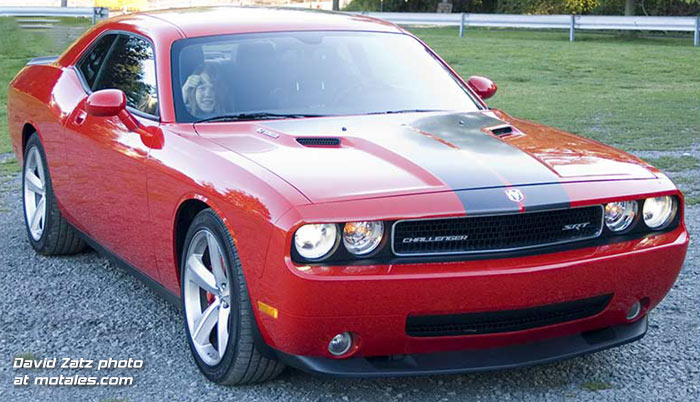
Inside, a unique-to-the-platform set of four gauges were a nod to the old Challengers, but they resembled the Dodge Caliber’s gauge cluster as much as the 1970 Challenger’s. The seats had retro styling, but the revived 2004 Mustang went to greater lengths to evoke the originals while maintaining modern conveniences. Still, the interior was quite spacious compared to other coupes, with a usable trunk and back seat; the seats were noted to be quite comfortable.
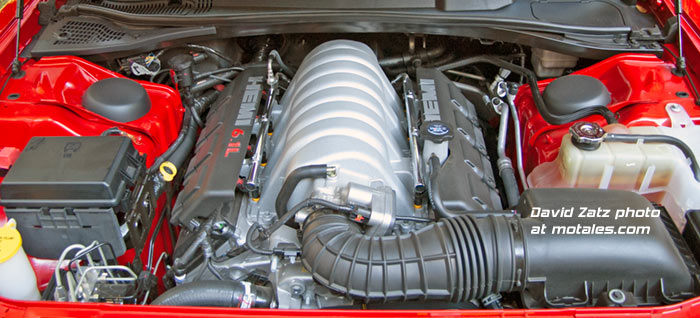
The Challenger was spawned off the Charger/300 and shared most of its parts, aside from sheet metal, with the others. Engineering costs were low compared with making a new standalone car (such as the original E-body Challenger/Barracuda). The rumor mill suggested that the company only planned on 40,000 sales per year. By pretty much any standard, the new Dodge Challenger was a major success—far more so than the original whose looks it copied so well, while being rather far apart in actual dimensions and proportions.
The 1970 Challenger had 84,032 sales, globally; the 1971 model brought in just 29,883, and 1972 was even worse. The 2008 Challenger only brought in 17,423 sales, but for most of the year, production was limited to the high end SRT8. Fortunately, sales would only go up from there.
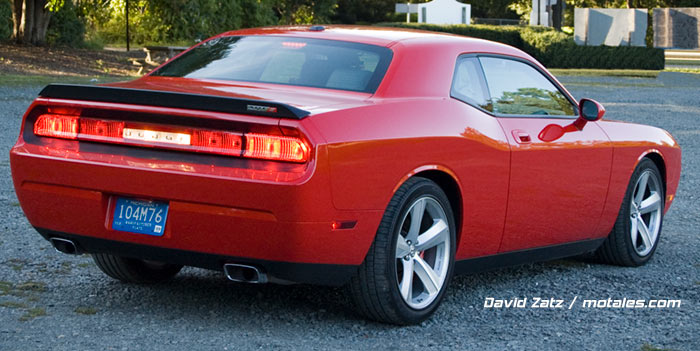
For 2009, Dodge expanded the Challenger’s appeal by offering lower-cost models: the SE and R/T models. The SE included 17” alloy wheels, keyless entry, a power driver’s seat, air conditioning, and a CD/MP3 player. It was powered by the 3.5L V6 engine which had been created for large cars of the 1990s, and had been upgraded for the 1999 Chryslers and Dodge Intrepid R/T; with its clever multi-length intake system, the V6 produced 250 horsepower and 250 lb-ft of torque. The only available transmission was a four-speed automatic. Many felt the 3.5 was too little for the car, even if it easily outpowered the original Challenger’s 318 cubic inch V8s—not to mention the slant six; the new Challenger was too heavy for the 3.5 to feel sprightly (though more aggressive gearing would have helped that, it would also have hurt highway mileage).
| Weight | 1970 | 2009 |
|---|---|---|
| Six | 2,970 | 3,720 |
| V8 | 3,020 | 4,041 |
| Top V8 | 3,390 | 4,140 |
In these comparisons, keep in mind that the 1970 Challenger weighed under 3,400 pounds even in hot R/T form, while the 2009 weighed around 4,140 pounds. The 318-powered 1970 cars (really more directly comparable to the V6) weighed just about 3,020 pounds compared wtih 3,720 for the new Challenger SE and 4,041 for the new Challenger R/T.
| 318 V8 | 383 V8 | 3.5 V6 | |
|---|---|---|---|
| Net HP | 155 | 250 | 250 |
| Torque* | 260 | 325 | 250 |
| Weight vs 3.5 | 700 lb | ~400 lb |
* In pound-feet. Classic Challenger figures are from 1971, the first year net output was available. The 440 Six-Pack was rated at 330 hp and 410 lb-ft of torque. The smallest engine on the Challenger was the 100-hp slant six. The impressive 340 V8 and a second four-barrel 383 were also available, as was a two-barrel 383 that was probably more of a match for the 3.5 V6. The 340 was probably the best of the vintage Challenger engines, given its high power and light weight.
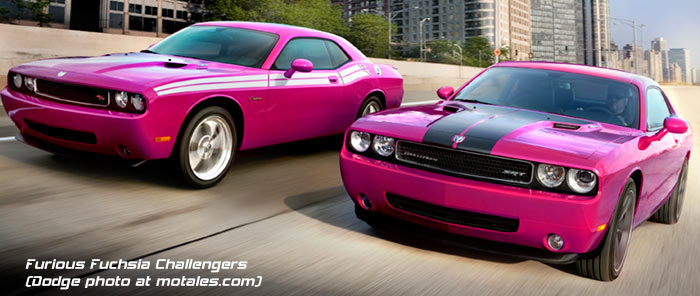
The R/T added a 5.7L Hemi V8 engine making 370 horsepower and 398 lb-ft of torque; it was mated to a 5-speed Mercedes automatic transmission, with an optional six-speed manual. The R/T also added 18” alloy wheels, a retuned suspension, and a leather-wrapped steering wheel. The Track Pak option added the manual transmission, a limited-slip differential, Hill Start Assist, a retuned steering system, and metal pedal covers.
| 440 | 5.7 | 426 | 6.1 | |
|---|---|---|---|---|
| Net HP | 305 | 370 | 350 | 425 |
| Torque | 400 | 398 | 390 | 420 |
The new Challenger R/T could run 0-60 mph in a shade less than 6.0 seconds, beating the 2009 Dodge Charger R/T sedan—and easily beating the old 1970 Dodge Challenger 440, even with triple two-barrel carburetors. The 5.7 Hemi even edged out the famed 426 Hemi’s published net power ratings, though these were under-rated by the factory and likely exceeded the 5.7’s 370 hp. Certainly, the 6.1 SRT V8 beat the original Hemi Challengers; despite a heavier body, it could run a 5.1-second 0-60mph.
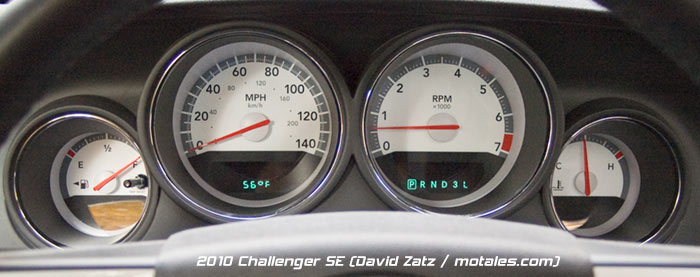
The 3.5 V6 was well proven, but some had issues with the Hemi V8, includnig “Hemi Tick.” This could be cured by swapping in the higher-performance oil pump from the 6.1 or later 6.4 liter engines, according to “word on the street.” Some people had problems with the variable displacement setup; in cases Allpar looked into, the owners’ garages had used the wrong grade of oil.
For 2010, the Challenger SE switched to the five-speed automatic; the R/T had a new Super Track Pak which took the Track Pak and added higher performance tires, a larger rear stabilizer bar, higher performance brake pads, and a retuned stability control function, all combined to result in a package designed to improve handling. In addition, owners could lower their windows remotely, using the key fob, a feature dropped from Challengers at the end of the 2011 model year.
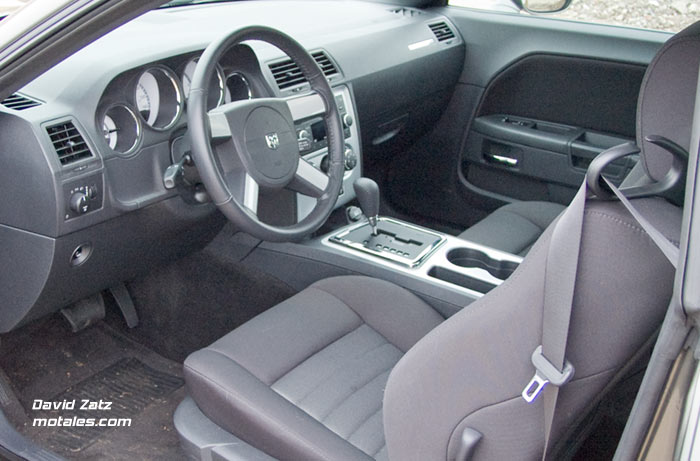
Chrysler sales bombed in 2009, falling by 36%; Dodge sales fell by 40%. The reason for this was the very public sale of Chrysler to Cerberus, followed by bankruptcy, coupled with rising fuel prices and a stalling economy. Despite all this, the Challenger did well, with 25,852 U.S. sales. For 2010, the Challenger rose to 36,791 in the U.S. alone. The car was on its way.
For 2011, the Challenger received extensive under-the-skin updates. A more powerful 3.6 “Pentastar” V6 engine replaced the old 3.5L V6; it was tuned to produce up to 305 horsepower and 268 lb-ft of torque, a major boost over the old 250 hp model, and city mileage rose from 25 to 27 mpg. (Both were rated at 18 mpg city).
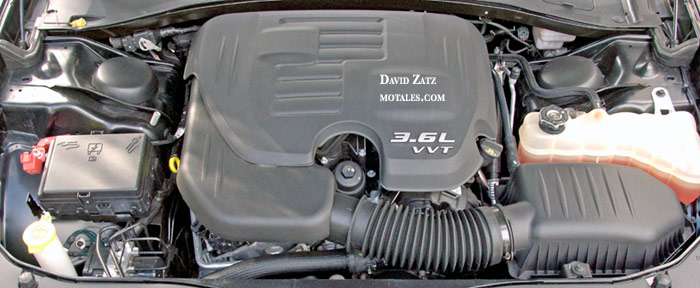
On the other end was the incredible new 6.4L “392” Hemi V8 engine, rated at 470 horsepower (well over the 6.1’s 425 horsepower)—and it came with reliable cylinder deactivation. The 392 cubic inch size was meant to evoke the most powerful original Hemi engines, which it easily outpowered (not surprisingly, given a half century of progress). While the original 392 was a “revvy” engine, with a great deal of power at higher engine speeds and less impressive performance straight off idle, the modern V8 was more of a “stump-puller” with a great deal of torque right from the start; thanks to variable valve timing and other tricks, it didn’t lose its breath at high revs, either.
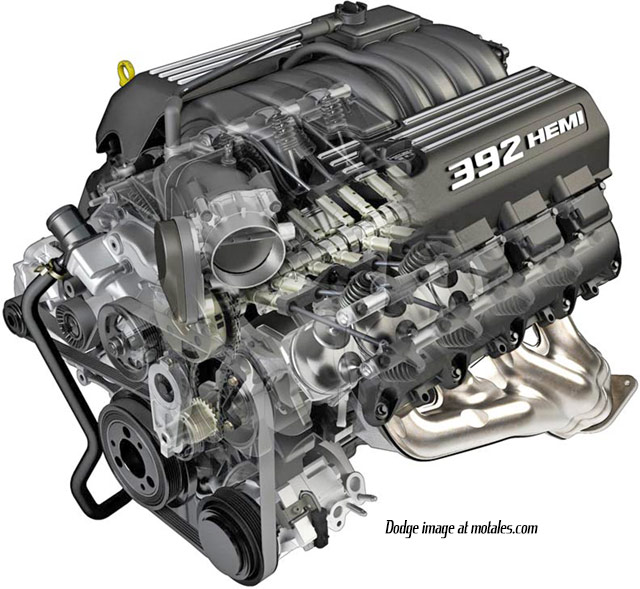
The 6.4 liter “392” engine had a dramatic power increase over the prior 6.1, despite a negligible size increase of 0.3 liters; yet, gas mileage was the same (14/22) with the automatic, and manual-transmission mileage rose from 13/19 to 14/23 as gearing took advantage of the 6.4’s generous low-end torque. (By comparison, the Challenger R/T was rated 16/25 automatic, 15/24 stick. R/T highway economy had risen from 2010 to 2011 by 2 mpg for the automatic and by 1 mpg for the stick; city mileage was unchanged.)
The suspension was retuned with new shocks and bushings and hydro-electric power steering, lightening steering and suspension feel; there were also new tire options, updated brakes, and a new steering wheel, more comfortable seats, a more aggressive lower grille and revised fascia and badging, and the removal of Ram-head logos (because Ram was now its own brand).
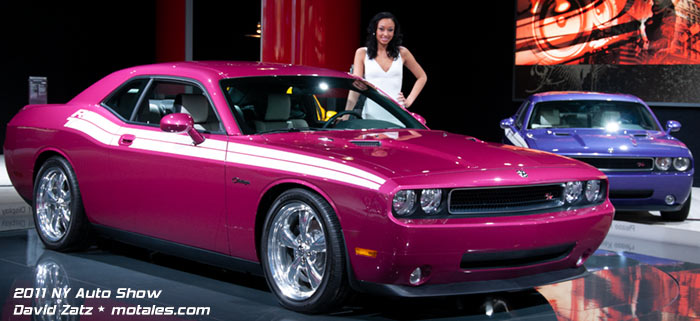
The interior upgrades can be summarized like this: Chrysler reportedly paid over $200 per car more to make the interiors of the 2011 Challengers than the 2010s. Materials were upgraded, fits were more precise, and the styling was refined. The 2011 Challenger had a much higher quality and more upmarket interior than the 2008-10 series.
The R/T and SRT8 continued to have a choice of a five-speed automatic or a six-speed manual transmissions, while the V6 cars were five-speed only. Sales rose to 39,534 for 2011—the new Challenger’s best year yet. This figure also topped all but one year (1970) of the vintage Challenger’s sales.
The 2012 Challenger SE was renamed “SXT.” Some automatic models had steering wheel shift paddles, and a heated steering wheel became optional. An 18-speaker Hartman Kardon sound system became available on the SRT8, which also gained a standard two-mode adaptive suspension setup with Auto and Sport modes.
For 2013, the SXT had an optional Rallye Redline package with dark exterior accents, black chrome wheels with red accents, a performance-tuned suspension and brakes, a 3.06 rear axle ratio, and an optional red leather interior. Electronic vehicle tracking and rear park assist became available for all models. The 5.7 Hemi was now rated at 372 hp and 400 lb-ft with the automatic and 375 hp and 410 lb-ft with the manual transmission. The Challenger’s brand-mates, incidentally, coupled an eight-speed automatic with their V6 engines; the Challenger would have to wait for this.
In the middle of the 2013 model year, buyers could opt for the SRT8 Core, which kept most of the SRT8’s performance gear intact, but took away some convenience and luxury equipment to bring the price down; it lost the bi-xenon headlights, fog lights, adaptive suspension, and premium sound system. SRT models got Performance Pages in their center screens, showing 0-60 times, quarter miles, extra gauges, and other data.
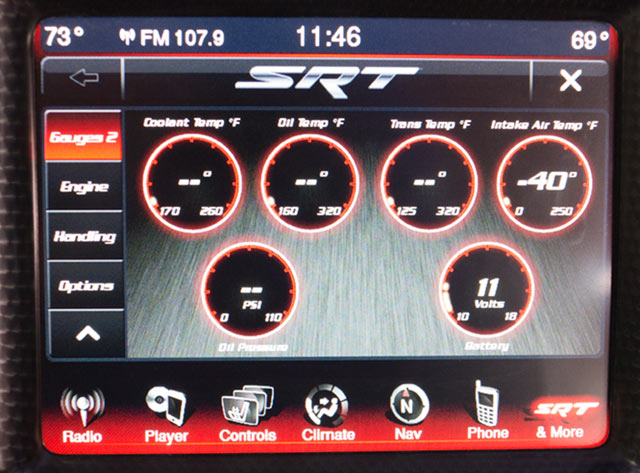
The Challenger was mostly unchanged for 2014, aside from a few new packages. The Super Stock Group added 20” chrome clad wheels, performance tires, paddle shifters, and performance-tuned suspension, brakes, and steering, a sport mode for the transmission, and a rear spoiler. The Sinister Super Stock added the same items, but with black wheels. The Redline package also became available for the R/T, adding red and gray stripes and 20” black chrome wheels with red accents.
Also for 2014, all models could have an optional performance-tuned suspension-and-brake setup with 20-inch aluminum wheels. The Challenger R/T Blacktop included the Super Track Pak and blacked-out appearance; and the R/T Classic gained soft leather-and-suede seats.
The Challenger received an extensive refresh for 2015. Though sheet metal was the same, new front and rear fascias were introduced, with LED daytime running lights in a dual halo design on the headlights, and dual “racetrack” LED tail lamps on the rear. The new split grille design was a throwback to the 1971 Challenger.
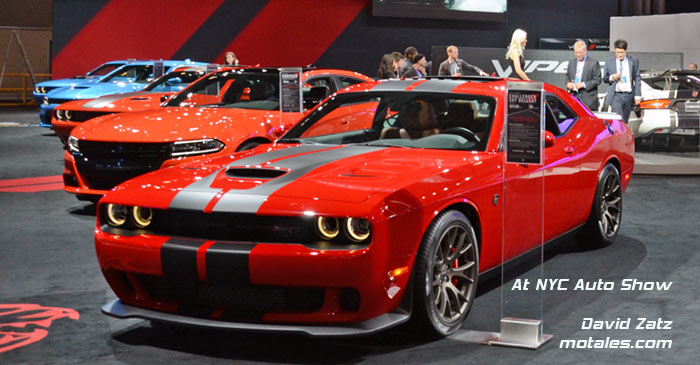
Inside, the interior was redesigned, finally adding up-to-date Uconnect systems, a 7” instrument cluster display, better materials, and a driver-oriented design. The dash and door panels were all new, as were the steering wheel; and new seat materials were added to the options roster. The new UConnect system, unfortunately, was released with severe bugs, including a tendency to freeze up over time, so that if you drove for more than 30 minutes, the knobs (critically including volume) would take around three to five minutes before responding; this was worsened by the fact that the on/off button was actually controlling software, so you couldn’t just shut off the radio if you accidentally set it to 100 db. The company issued fixes over time.
Safety and driver convenience was bolstered by optional blind spot monitoring, rear cross path detection, adaptive cruise control, forward collision alerts with braking, a back-up camera, rain sensing windshield wipers, and automatic high-beam headlights.
Under the skin, there were serious changes as well. An 8-speed automatic transmission replaced the five-speed; the six-speed manual was still available on V8 models. The transformational effect of this transmission on the V6 cannot be overstated; it dropped 0-60 times by well over a second while increasing fuel economy. The eight-speed had a lower first and a higher top gear, and was generally more efficient and much faster when shifting. The more power the engine had, the faster it was programmed to shift—with the SRT shifting in tenths of a second.
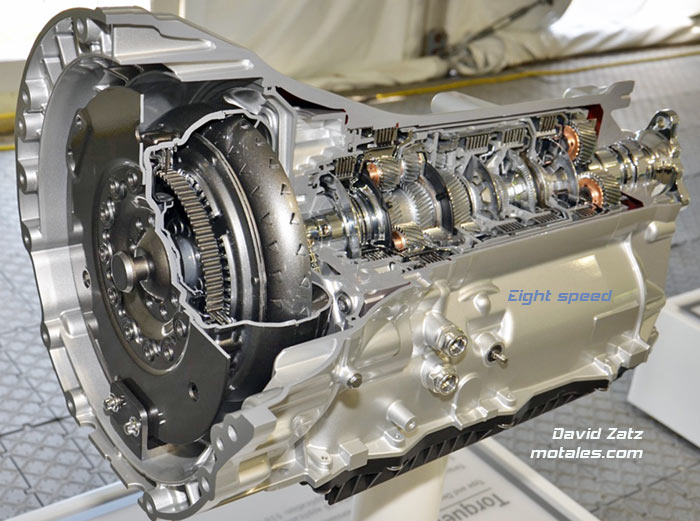
Dodge also added completely electric power steering, cast-aluminum axle housings to reduce weight, updated suspension tuning which made the car feel lighter, and a fully electronic shifter.
The R/T Scat Pack replaced the SRT8 Core; the Core dropped the premium features, and the Scat Pack made them optional. Plus versions of the SXT and R/T were added for this year; and Shaker hoods (a hole cut into the hood to reveal the “shaking” air cleaner cover) were optional on the R/T and Scat Pack.
2015 was mainly the year of the stunning Hellcat, a supercharged 6.2 liter Hemi V8 engine rated at 707 horsepower—making it the most powerful muscle car ever. Buyers could option it with either the 6-speed manual transmission or an 8-speed automatic; to support this power, the engine had new aluminum-alloy cylinder heads optimized for improved thermal conductivity, a forged-steel crankshaft with induction hardened bearing surfaces, high-strength forged alloy pistons with powder-forged connecting rods, high-load capacity bushings, and diamond-like-carbon-coated piston pins. The SRT Hellcat was available in four drive modes which customized horsepower, shift speeds, steering response, paddle shifters, traction control, and suspension damping. The brakes on the Hellcat were 15.4 inch Brembo two-piece rotors with six-piston calipers up front.
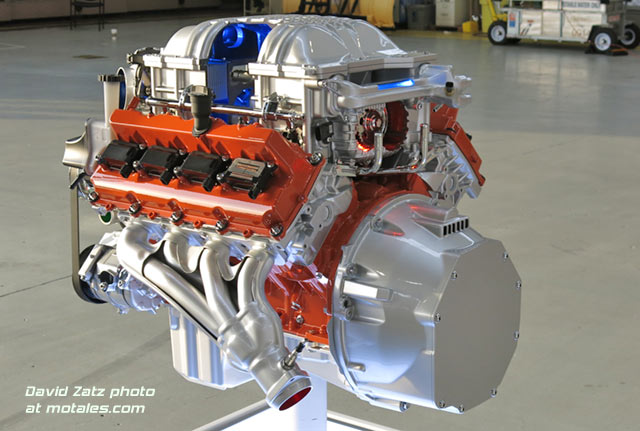
The Hellcat got a redesigned front fascia and hood for increased airflow; the cooling system was beefed up as well. The goal, which they achieved, was to let drivers race Hellcat cars as hard as they could without being limited by cooling problems. Some competing cars would lose power after a single quarter mile drag-strip run; not the Hellcat. Traction might be something of an issue, but the Hellcat cars could be driven as regular grocery-getters, raced on the track, and then driven normally again, with no apparent problems. The engines may have been unprecedented in their power, for attainable mass-production cars, but they were also very well behaved.
Dodge sold 66,377 Challengers in the U.S., with the Hellcat lending luster.
With that kind of a first-year splash, there wasn’t much need for more in the 2016s; the Blacktop appearance group was optional on SXT and R/T, and the Hellcat models were available with stripes.
The 2017 Challenger brought back the historic T/A name, without the many quality gaffes of the original (one magazine, for example, had the shifter of a test car come off in their hands). There were two versions, one based on the R/T, the other (“T/A 392”) based on the Scat Pack. They used heritage styling elements—available hood pins, matte black hood, roof, and trunk lid, side stripe, and unique, wider wheels—9” wide on the 5.7L model and 9.5” wide on the 6.4L model. Brembo brakes, more deeply bolstered seats, and a performance steering wheel were part of the T/A 392 package. A standard Mopar cold-air induction system improved airflow, using an intake through the middle of the headlamps and a cold-air hood system similar to the one found on the SRT Hellcat.
Other changes included the first AWD Challenger, the new GT AWD, sold as a V6 only. All V8s gained active exhaust. The fourth-generation UConnect debuted, with Apple CarPlay and Android Auto, sharper graphics, and more processing power. Finally, SRT models added new lightweight wheels and put illuminated SRT logos to the steering wheel. All told, Dodge sold 64,433 Challengers in the U.S. in 2016, and 64,547 in 2017.
The headline news for 2018 Challengers was the stunning and positively demented Challenger SRT Demon, a limited production car made for drag racing but still street legal; with 840 horsepower (on racing fuel) and 770 lb-ft of torque, it easily claimed the title of the world’s fastest quarter-mile production car.
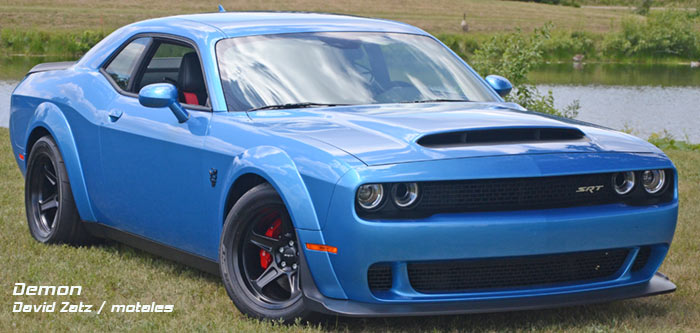
Creating the Demon required a larger 2.7-liter supercharger with an increase to 14.5 psi of boost pressure; a higher 6500 RPM limit; a new liquid-to-air intercooler chiller system; and an after-run chiller that cooled the supercharger after the engine was shut off to avoid burning the oil in it.
The Demon had a number of firsts for a factory-production car, including being the first to automatically compensate for running standard 91-octane premium fuel or 100+ octane race gas. It was also the first with TransBrake, the first with Torque Reserve, and the first with a front passenger seat delete option. More on the Demon will be described in a future page.
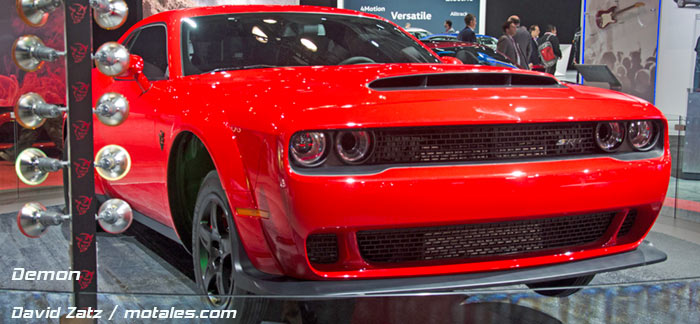
The Demon kicked off the Challenger Widebody, which basically just meant that fender flares were put on to allow for 20x11 wheels in the rear. (The flares added 3.5 inches to the car’s width without other changes.) The Demon could achieve a 0-60 MPH time of 2.3 seconds and a quarter-mile time of 11.2 seconds on street tires (10.8 seconds on drag radial tires)—these were NHRA-certified times.
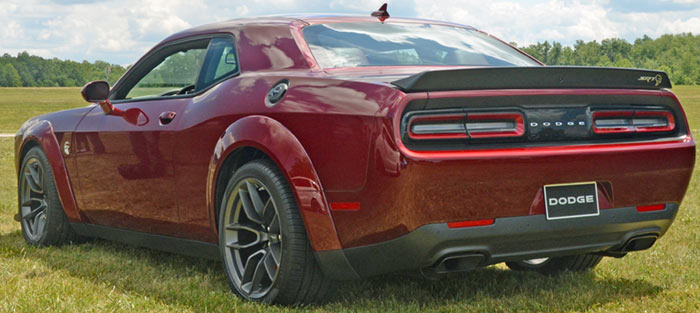
The more “ordinary” Hellcat Widebody included the 20x11 rear wheels with the fender flares and an adaptive suspension, but not the 840 hp (808 hp on premium fuel) engine or racing goodies. Flares were added to both front and rear wheels.
Challenger sales rose for the year, to 66,716.
With the Demon’s limited run over, Dodge went back to its parts bin to create some new packages for a range-topping 2019 Challenger. This was the SRT Hellcat Redeye, which was rated at 797 horsepower and 707 lb-ft of torque, good for a 0-60 MPH time of 3.4 seconds and a top speed of 203 MPH.
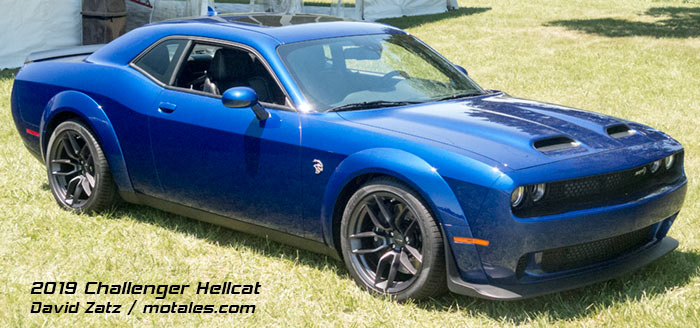
Items borrowed from the Demon were the larger supercharger, stronger connecting rods and pistons, high-speed valve train, fuel-injection system, fender flares, and improved lubrication. The Redeye had some Demon features as options, such as the after-run chiller and torque reserve; to differentiate it from the regular Hellcat, the Redeye had new Hellcat badges with a red eye on the fenders, instrument panel, key fobs, and supercharger housing. The fender flares and larger wheels of the Demon and Redeye were also part of a separate option called the Widebody.
The “ordinary” SRT Hellcat also got a power boost for 2019, up to 717 horsepower from 707. All Hellcats, including the Widebody and Redeye, had a new dual snorkel hood with two hood scoops to increase air flow and an after-run chiller. New dual stripe packages are available on the Hellcat featuring blue, carbon, red, and silver stripes.
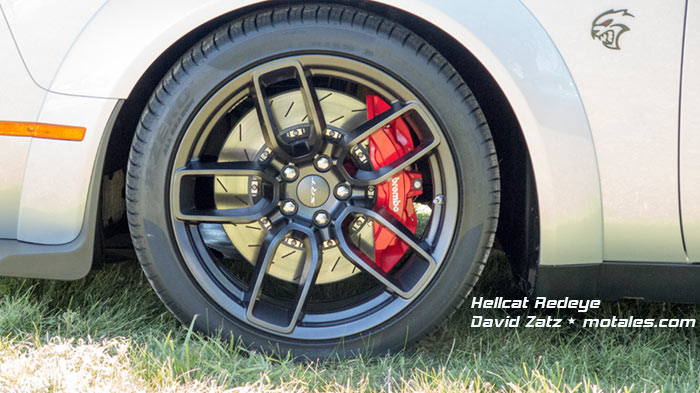
Line Lock became standard on the SRT Hellcat and R/T Scat Pack. New wheel designs were added to the lineup as well.
The 392 was dropped from the SRT line, which was now Hellcat only; most of its equipment was moved to the Scat Pack options list (to clarify, Scat Pack kept the 392). The Scat Pack also took on the Air Catcher headlamps and 2018 Hellcat hoods to improve airflow, and adopted the Hellcat’s Widebody package option. The Scat Pack Widebody model was the only non-Hellcat model to share a fascia with the Hellcat and Hellcat Redeye.
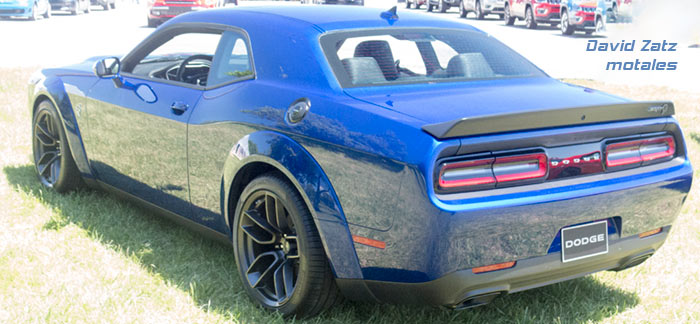
The R/T now had standard Super Track Pak equipment including the performance-tuned suspension, steering, 20” wheels, performance hood, performance seats, and paddle shifters. A Performance Handing Group became available on the R/T, adding upgraded springs, sway bars, Bilstein shocks, bushings, and mounts. The Performance Plus Package added 20x9.5” wheels, a limited slip differential, and improved handling.
The new GT RWD model also included most of the Super Track features.
Every V8 Challenger now a rear seat delete option; new wheels, colors, and appearance packages were also available across the lineup. Despite all this, sales fell somewhat to 60,997; it seems likely many bought Chargers instead, since the sedan’s sales rose by around 17,000 for the year.
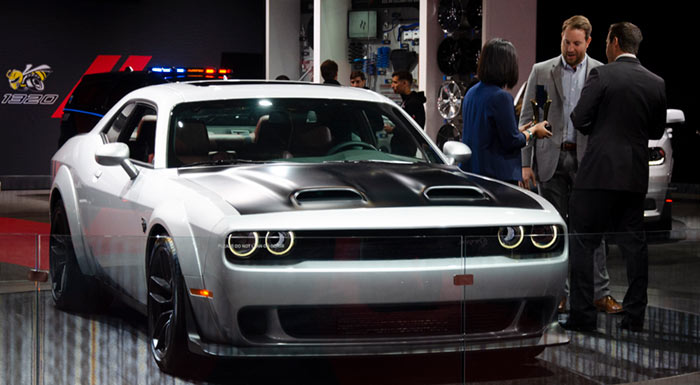
For 2020, a limited production 50th Anniversary Edition Package was optional on the GT RWD, R/T Shaker, R/T Scat Pack Shaker, and R/T Scat Pack Shaker Widebody; it included a body-color Shaker hood scoop (V8 only), new colors, a premium interior with Sepia accent stitching, carbon fiber accents, a unique gauge cluster, and the “50” logo. The package wrapped up with a matte black hand-painted hood and a black-wrapped roof and trunk lid. The wheels and emblems on this package, instead of being silver or black, were painted in a new “Gold School” finish, which was basically silver with a slight gold tint.
New wheels and finishes became available through the entire lineup, and new Hemi fender badges were added to the R/T; the Scat Pack Super Bee gained a spoiler badge declaring its bee-ness. All Challengers with leather added premium-stitched dash and door panels and V8 models could be equipped with a suede headliner and real carbon fiber dash trim. A flat bottom steering wheel was included with certain packages, and a “caramel” interior color option for the suede seats was added to the GT, R/T, and Scat Pack.
U.S. sales fell again, to 52,955, for 2020, in the midst of pandemic shutdowns.
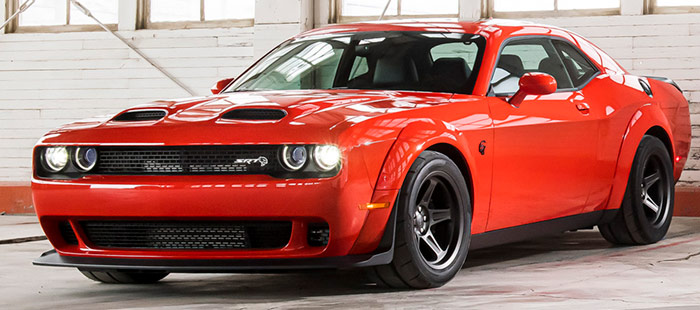
2021 brought the Dodge Challenger SRT Super Stock (shown above), which included 18x11 wheels, 315/40R18 Nitto street-legal drag radials, and an 807-hp version of the Redeye car, combining to do 0-60 runs in 3.25 seconds and quarter miles in a stunning 10.5 seconds. There were also minor changes—memory seats/steering columns/mirrors/radio on all models; a new black chrome finish on the grille, spoiler, and badges for the Redeye and Super Stock; SRT branding on the Brembo brakes on the Hellcat, optional on Scat Pack; 20-inch wheels standard on GT AWD, and optional on SXT AWD. The R/T Scat Pack Shaker and T/A 392 were both available for 2021 cars with the Widebody setup; the “Challenger R/T Scat Pack Shaker Widebody” (yes, that was the real name) included the Shaker cold air intake, while the T/A 392 Widebody had all the usual T/A 392 kit plus the wide wheels. Sales rose by around 3%, to 54,314; Charger sales rose by 1% in this same year (overall Dodge sales aren’t comparable because the Caravan and Journey were both dropped).
2022 updates included the belated addition of a “deluxe” alarm on all the high performance Challengers; it was included with the Driver Convenience Group on lesser models. This was likely prompted by a spate of Hellcat thefts. Nothing more was done; nothing more needed to be done in the midst of a national car shortage.
For 2023, there was a big blast with a special edition—the Demon 170, with a stunning 1,025 horsepower. Then the Challenger fell silent—possibly until 2025 or 2026; possibly forever.
Italy slaps Elkanns’ wrists in tax case
See how Jeep, Dodge, Ram, Chrysler do on new quality-vs-cost chart
Copyright © 2021-2025 Zatz LLC • Chrysler / Mopar car stories and history.
YouTube • Editorial Guidelines • Videos
Tailfins Archive • MoTales on BlueSky